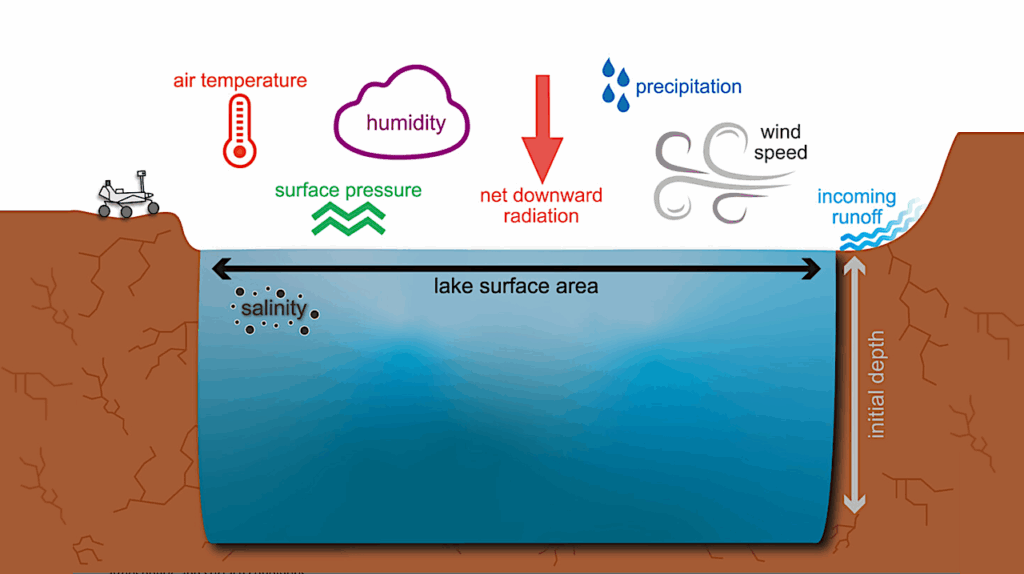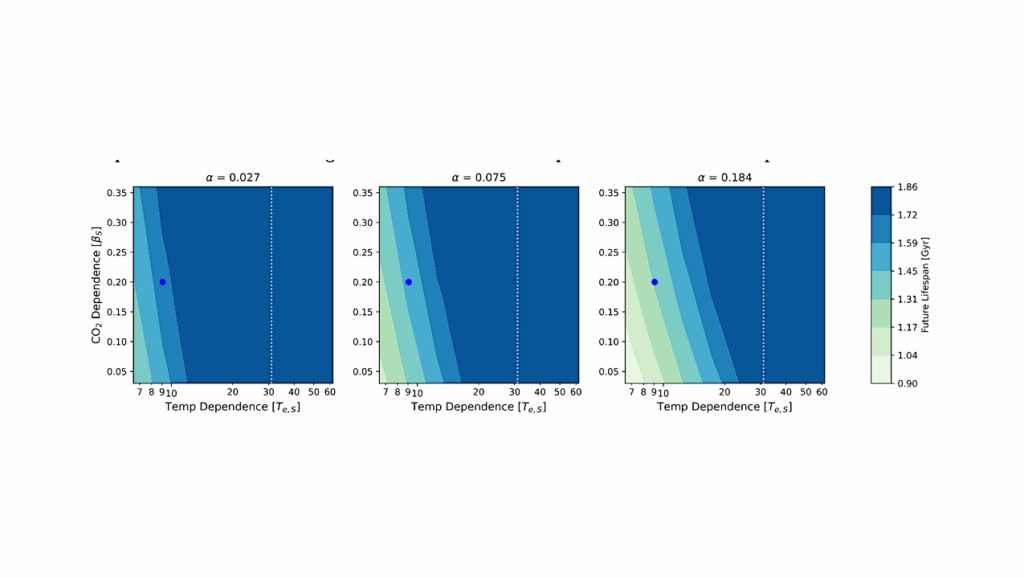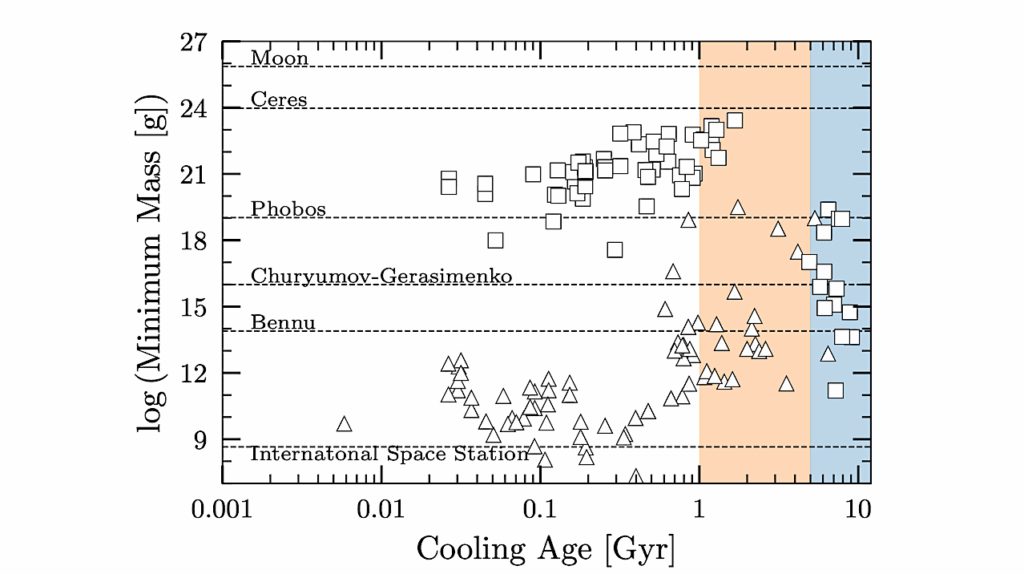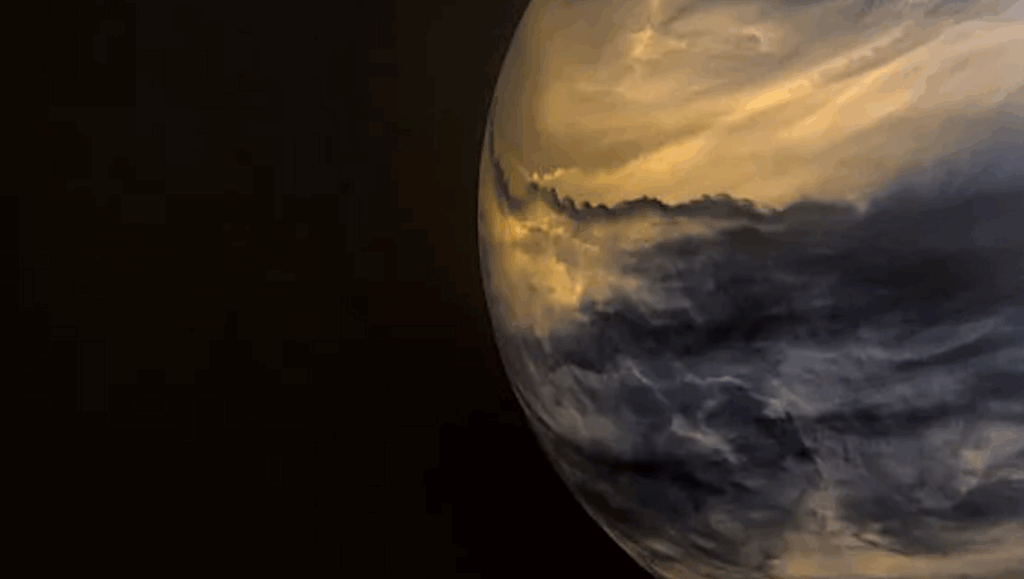Variability In Low Mars Atmosphere’s H2O Concentration Stimulated By Solar Cycle Activity

Exploring planetary atmospheres, particularly Mars, captivates planetary science. Mars’ thin, CO2-rich atmosphere poses a unique puzzle involving composition, climate history, and habitability.
Understanding Mars’ atmosphere not only reveals insights about the planet but also aids in comprehending atmospheres across the cosmos. This study aims to investigate the complex relationship between Mars’ atmospheric variations and dynamic solar activity patterns. We focus on periodic oscillations in H2O vapor and the Pectinton solar flux index in the λ = 10.7 cm radio band, around the characteristic 11-year solar cycle.
Periodic Mars activity was studied using data from Mars Express’ SPICAM instrument spanning 2004-2018. The Lomb-Scargle Periodogram method was applied to analyze the power spectra of both signals around this period, calibrated using peaks associated with the seasonal Martian cycle. This method was validated by analyzing power spectra of chemical species abundances in Earth’s atmosphere, obtained from the NRLMSISE−00 empirical model provided by the National Oceanic and Atmospheric Administration (NOAA). Model executions reproduced chemical abundance data for various atmospheric species (N2, O2, N, H2, Ar, and He) at two reference heights (upper mesosphere and low ionosphere) over a 1961-2021 time span.
Results suggest a connection between variability in H2O vapor concentration in Mars’ atmosphere and fluctuations in the Pectinton solar flux index. We propose the Lomb-Scargle Periodogram method as a heuristic for studying oscillatory activity in planetary atmospheres with non-uniformly sampled data. While our results provide valuable insights, further analysis, cross-referencing with data from different orbiters, is required to deepen our understanding of these findings in the fields of planetary climatology and atmospheric physics.
J. N. Molina (1), S. Vargas (1), J. I. Zuluaga (2) ((1) Universidad Nacional de Colombia, Observatorio Astronómico Nacional, Bogotá, Colombia, (2) Departamento de Física, Universidad de Antioquia, Medellín, Colombia)
Comments: 25 pages, 24 figures
Subjects: Earth and Planetary Astrophysics (astro-ph.EP); Atmospheric and Oceanic Physics (physics.ao-ph)
MSC classes: 85A11 (Primary), 86A11 (Secondary)
ACM classes: E.1; E.2; G.4
Cite as: arXiv:2309.02809 [astro-ph.EP] (or arXiv:2309.02809v1 [astro-ph.EP] for this version)
Submission history
From: Johan Nicolás Molina Córdoba
[v1] Wed, 6 Sep 2023 07:51:31 UTC (8,281 KB)
https://arxiv.org/abs/2309.02809
Astrobiology








